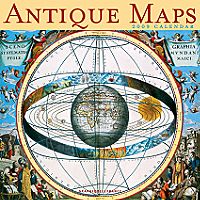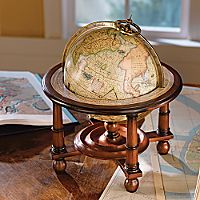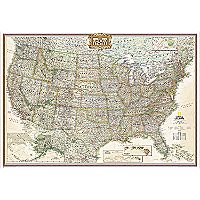Vintage Spectacles - What You Need to Know
Author: Debbie MendozaSpectacle frame fashions undergo as many variations as hemlines have!
Lens Materials
The mineral quartc is relatively weighty - another very good reason for keeping the lens size down. These days eyeglass lenses are generally made from lightweight plastics called allyl diglycol carbonate. The plastic's name is often abbreviated to CR-39, standing for Columbia Resin, and it is less than half the weight of glass, which supplanted quartz in the early twentieth century. There are lighter spectacle lens option such as polycarbonate which is feather light and able to withstand heavy impact. Digressing slightly, it is the material of choice for vandal-proof light fittings.
Unfortunately, although impact resistant, the material is certainly not scratch resistant which is an important quality to bear in mind when fabricating spectacle lenses. These days polycarbonate lenses, which are a feature of safety eyewear, are surface treated to make them more resistant to scratching.
Vintage Frames
Most people want to collect vintage frames to wear them. There are a number of possible pitfalls to bear in mind. For example:
What materials deteriorate?
This is a slightly silly question as all frames deteriorate over time. Those the least susceptible to deterioration are metal-rimmed frames. However with frames from around the mid twentieth century and onwards it is common to find the end tips and the nose pads are plastic coated. The core of such frames consists of nickel, which can set off marked reaction if it is contact with the skin (nickel dermatitis). End tips & nose pads on such frames do deteriorate due to acid in perspiration, but fortunately a good optical outlet can generally fit replacement pads and tips - these may not totally match the originals, but their positioning means they will be hidden behind your ears or behind the lenses.
Other eyeglass frame material fare less well. Various plastics were utilised in the 20th century:
Cellulose Nitrate
This material, first developed in 1850, was originally used for the production of movie film and for a short while was used in spectacle frame production. However it is essentially the same material as guncotton (!) and it is now illegal to supply this, either in spectacle frames (or in films either). It deteriorates over time, and with heat gives off an acid smell. Should it catch fire it produces its own oxygen and burns really fiercely. This plastic decomposes over time and becomes dangerously inflammable. This material is so dangerous that museums are not allowed to have examples stored or on display. You should defnitely avoid nitrate frames!
Cellulose Acetate
This material was developed and used for the production of glasses frames in the early 1920s in France. Unlike its nitrate cousin this material was not flammable. It is a stable material and easily worked and colored. It is still used today for spectacle frames. Over time, if stored in overly hot conditions it will tend to lose its plasticity and elasticity, making it brittle and the shapes to warp.
Perspex
This very strong material gained popularity in the fifties and sixties for upswept cats-eye supra frames. These eliminated the lower frame rim, substituting a nylon cord (like fishing line) which was held under tension in the lower rim of the spectacle lens that had a groove cut to take the nylon cord. Although the nylon supra design was strong, the material is very brittle, needing a great deal of heat before it can be adjusted to fit the person's face properly. If the frame is not sufficiently hot it will snap and cannot be repaired. However it is actually relatively straightforward for the nylon cord to be replaced, should that break over time.
There are various other materials such as carbon fibre, which enjoyed brief popularity in the seventies, but there is not enough space in this article to cover less popular materials any more comprehensively.
Are the frames safe to wear?
Well, with the exception of cellulose nitrate (see above) yes, they are all safe.
Can prescription lenses be put into a vintage frame?
Naturally every pair of spectacles must fit you properly. Some prescriptions are not suited to certain frames, and the interpupillary distance (how far apart your eyes are!) will influence how thin the lens can be at the edge. You will need to show your chosen frame to your eyecare practitioner as it is possible to calculate the expected thickness of the lens edge for your prescription and frame chosen.
Those frames with plastic rims need to be tough enough to be heated to stretch around the lens bevel, then able to shrink back to hold the lens securely. Your eye care specialist / optometrist will be able to advise on potential problems - glazing an old frame in this way will probably only be undertaken at you own risk. Opticians canot predict just by visual inspection how fragile and brittle your vintage frame might be. Reputable companies supplying vintage spectacles from the fifties will be able to give an indication on how robust the frames are likely to be but it is likely that they too will be able to offer any cast-iron guarantees, for the same reason.
Vintage spectacle styles can undoubtedly give your fashion sense a unique flavor. You may collect simply for the joy of owning a piece of history, or for use in costume drama, or to wear yourself, but whatever the reason - good luck with your hunting!
Debbie Mendoza has studied fifties fashions over many years - she specializes in the history of vintage shapewear & stockings. Her passion for the 40s & 50s led to her founding http://www.sleeknchic.com, first in America and for the past 5 years in England, where she now lives.
Article Source: http://www.articlesbase.com/art-and-entertainment-articles/vintage-spectacles-what-you-need-to-know-726557.html











No comments:
Post a Comment